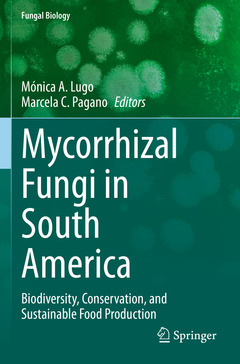Mycorrhizal Fungi in South America, 1st ed. 2022 Biodiversity, Conservation, and Sustainable Food Production Fungal Biology Series
Coordonnateurs : Lugo Mónica A., Pagano Marcela C.

Compiles new information for the mycorrhizal occurrence in natural and anthropic environments in South America
Written by top scholars from South America
Fills the gaps in knowledge of biodiversity, management and save food production of the mycorrhizas, and its fungal partners
Date de parution : 10-2023
Ouvrage de 465 p.
15.5x23.5 cm
Disponible chez l'éditeur (délai d'approvisionnement : 15 jours).
Prix indicatif 126,59 €
Ajouter au panierDate de parution : 10-2022
Ouvrage de 465 p.
15.5x23.5 cm
Disponible chez l'éditeur (délai d'approvisionnement : 15 jours).
Prix indicatif 168,79 €
Ajouter au panierThèmes de Mycorrhizal Fungi in South America :
Mots-clés :
Ces ouvrages sont susceptibles de vous intéresser

Mycorrhizal Fungi in South America 179,34 €

Va Mycorrhiza 220,72 €

